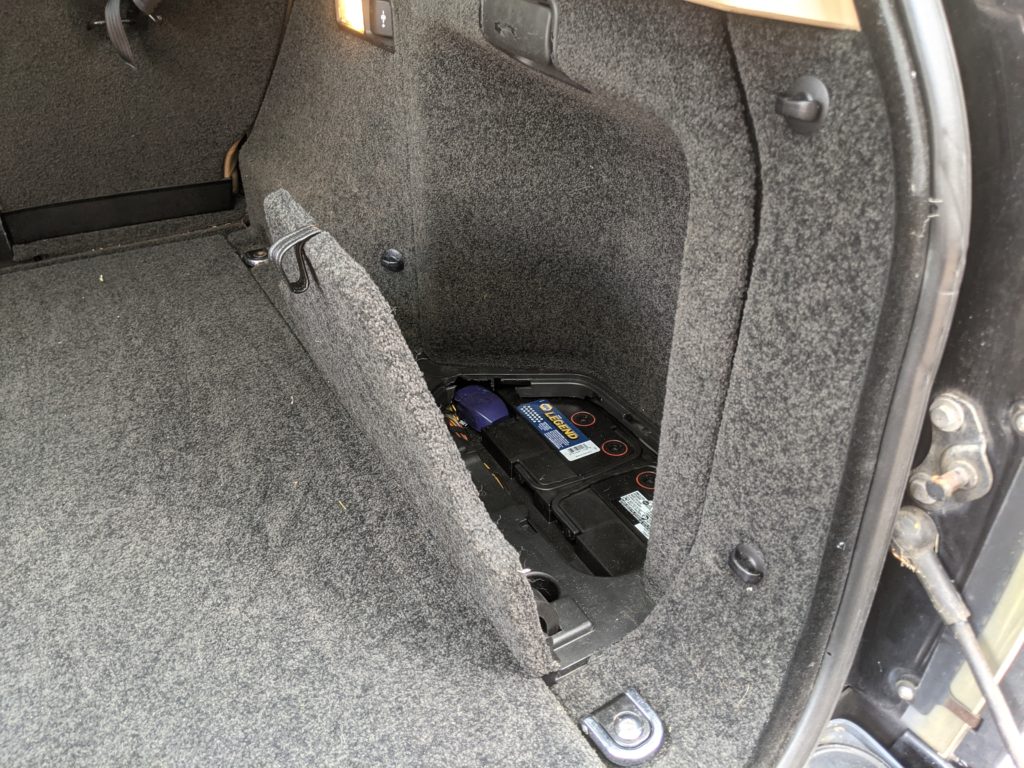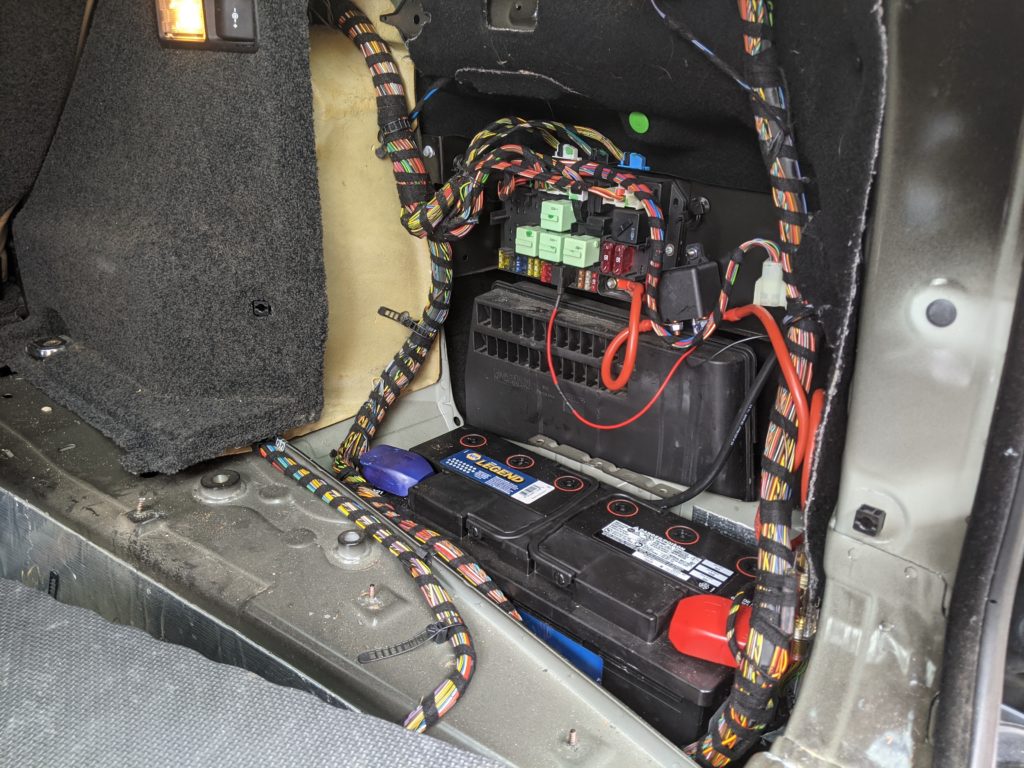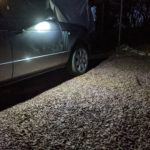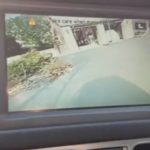In this video, I review installing the second battery kit from Luxury Land Rover upgrades. The purpose of doing this is to ensure I have 100% power at the time of starting the 2003 Land Rover Range Rover L322. Often times, if the battery isn’t perfect, you will get strange error codes (trans failsafe, suspension errors, etc.). Please note, this won’t function if the primary battery is below 9VOLTS. I had a viewer reach out in which we exchanged dialog, click here to read. He provided lots of great insights.

This second battery will trigger when the car is started, providing additional power to make-up for any drainage the primary battery occurred while sitting. These L322’s are prone to drain the battery, even when parked.
A few key points:
- The fuse I show in the video isn’t the proper one. I changed it to the fuel pump, as I state in the intro of this video
- If you have a large battery drain, taking your battery below 9 VOLTS, the second battery won’t help. If the battery goes below 10V, I’m told this won’t engage when you go to start the car. I don’t know the technical details beyond this but what Luke at Luxury Land Rover Upgrades told me. Please see the dialog below with a visitor to my website in which we exchanged some very healthy dialog around this.
- I used the NAPA battery that is identical to under the hood (bonnet). It’s a tight fit, but I got it in.
- This video is long but designed to let you follow along as I install this kit. If you need step-by-step guidance, this is for you.
I hope you find this little project beneficial and useful if you plan to add a second battery. Be sure to subscribe to my YouTube channel and shoot me an e-mail if you have any suggestions.

On April 11, 2021, I had a great e-mail dialog with Richard Town who watched my video and had some questions. In specific, it was around my comment about how this wouldn’t work if the primary battery was below 9VOLTS. Richard’s is based in South Blackheath, London. Here is our dialog:
Hello Richard,
Thanks for watching my video and I’ll do my best to answer your questions based on what I know about the device. I look forward to your reply.
The car’s switched off with keys removed and locked up? Primary Battery
connected to IMMO system. Secondary battery connected to what [ ? ]
JM: When off, with keys removed, the second battery does nothing. It will not drain. It’s not activated until you turn the key on and in my case the fuel pump kicks in. It’s tied into the fuel pump fuse. If you have a battery drain, the primary battery will continue to drain. As long as it doesn’t get too low, the ideal is, the second battery will help boost when you go to turn the car over. But I am told, if it falls (primary battery) below 9 volts, it won’t kick the second battery in. I don’t know the technical details behind this, just what Luke told me. So if you have a major drain, it will be useless.
The car’s switched on with key in IGN position but engine not started?
Primary Battery connected to IGN system. Secondary battery connected to
what [ ? ]
JM: In this case, if I turn the key to ignition, the fuel pump will engage, thus, pumping fuel. That means the second battery is active. So, let’s say my primary battery is at 10 VOLTS. Turn to IGN, second battery engages, now I will have a full 12+ volts on the crank. This avoids the typical errors a low battery will cause.
The car’s running with engine started? Primary Battery connected to
what? [ ? ] Secondary battery connected to what? [ ? ]
JM: The L322 has the battery cables that run from the engine bay to the rear, which are dedicated. So, when you hook the second battery up, it will use these dedicated wires to feed into the primary battery. So, when the engine is started, it has the primary battery feed plus the secondary battery feed as well, thus, can recharge also.
The car’s running but Primary Battery is low volts (say less than 10V so
nearly flat) [ ? ] Secondary battery connected to what [ ? ]
JM: If the primary battery falls below 9VOLTS, the second battery won’t engage. If I am going to park my L322 for more than a week, I still have on a solar trickle charger.
The car’s running but Secondary Battery is low volts (say less than 10V
so nearly flat) [ ? ] Secondary battery connected to what [ ? ]
JM: THe second battery will recharge from the alternator. So, let’s say you turn the car over and the primary battery was 10 VOLTS. The secondary battery, for whatever reason, was 8 volts. That additional 8 VOLTS would be used and the alternator would recharge both to 12 VOLTS.
If you have a circuit, that’d be a great help too.
JM: I don’t have a circuit but not sure I follow what this is. I do wish, if the primary battery was below 9 VOLTS, the second battery would still work. Luke has a reason why this is not the case.
On every car in my car collection, I keep on a battery trickle charge. Another option I use is solar panels: https://jamz.net/solar-power-battery-tender/
The L322 always draws power when asleep. It’s also critical to ensure you LOCK the L322 or it won’t fully go to sleep.
So, the relay coil’s energising volts come by default from the Primary Battery (I will also connect into the fuel pump’s fuse holder F80 25A) So if the Primary Battery’s volts are already too low (9V is the fully discharged state of a lead acid battery) then the relay won’t energise and do the job that everyone’s asking for: to start the car from the second battery!
JM: This makes total sense. I’ll make this update on my website and the video as well. I think it’s critical for folks to know and elaborates on what Luke told me.
The relay then needs to be a changeover relay that will changeover to the second battery disconnecting the primary battery from circuit. This is because if both the fully discharged primary battery and the charged secondary battery are connected together (placed in parallel) then the secondary battery will try to charge the primary battery instead of giving lots of power to start the car.
JM: I understand and seems logical.
I also have a Noco Boost pack that’s really useful to start the car when the battery’s nearly flat. They get over this in the Noco’s design by limiting the amount of current when first connected. Then when the 40 or 50 amps of power is demanded by the starter motor the Noco switches to full supply via some very clever control electronics in the Noco that I don’t know about!
When I’ve had the battery down flat to less than 9V even the Noco would not start it. I had to wait until there was a parking space outside my house then connect a trickle charger (4 amps maximum) all day for there to be anything like full charge made.
JM: In this situation, what a pain. This is why I still keep my L322 I don’t drive as much, which I put this second battery in, on the constant charge when parked.
If a relay energising voltage from another source (such as via a Zener diode for automatic operation off the second battery triggered by the primary battery’s voltage being too low) or a manual switch connected to the relay’s coil was used then the relay could be forced to switch to the second battery for starting. Or from the second battery. The switch could be a spring loaded one to make sure it was not left always on. It would have to be mounted close to the IGN switch so it could be operated at the same time as starting the car. Only thin 3 amp cable would be needed as a relay coil doesn’t take much current. Once the car was started then the spring loaded switch would be released and operation from the primary battery would continue with it being charged as normal until its terminal voltage caused the relay to switch over.
JM: I love this idea!
That’s as I understand the problem and a possible cure. These secondary battery kits are not designed for our problem of a major design fault of the L322 that will flatten the battery after three weeks. That’s the maximum time I’ve not used my L322 locked up.
JM: The second battery has proven useful though. Even if my L322 starts, without a full charge of 12V on the battery, I sometimes had funky “phantom” errors. This honestly was my primary purpose.
Battery drain issues are:
Cabin fan final stage switching transistors’ fault (manufacturer’s recall) At least make sure the fan switches on the dash are at zero before switching off IGN
JM: Excellent feedback. I started ensuring I cut all ventilation off, before I power down.
Headlight wiper motor not going back to zero: so keeping the motor in circuit. Just pushing the arms back to zero datum can cure
JM: Had no idea!
Tilt and presence sensors on the security system in use: press Lock twice on the key fob to disable those sensors
JM: I am not familiar with these sensors.
And I found that my tailgate switches were coming on when wet: The water was draining around the tailgate rubber and into the switches: it either keeps the switches on or shorts the voltage via the water in the switches to chassis. I squeezed my tailgate rubber after last out in heavy rains and it was full of water. I squirted the switches liberally with WD40 and the boot lights started switching off again OK when the tailgate was closed.
JM: I have noticed the seals on the L322 in general seem to hold water. Especially in the doors.
Someone in the LandyZone forum bought a new tailgate rubber and installed it. But that was a few years ago and he didn’t come back to the forum to say whether that cured his battery discharge fault or not.



